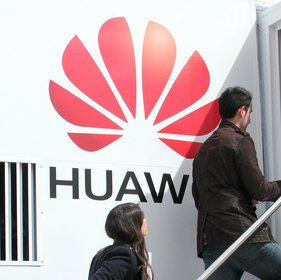
Huawei has sketched out plans for what it's calling 5.5G, calling for new standards to support high-speed uplinks, drones and hundreds of billions of connections.
Huawei's executive director, David Wang, said there was so far no sign of "5G changing the world," as the popular Chinese saying has it, although it had outperformed 4G in mobile broadband.
But its weaknesses include the lack of high-bandwidth uplink and its ability to handle large-scale and diverse connection scenarios.
"We want to see hundreds of billions of connections on the cellular network, but there's still a big gap. What can we do to change its capabilities?" Wang asked.
Speaking at the Huawei-GSMA Mobile Broadband Forum on Friday, he offered three new potential categories for standards.
The first, Uplink Centric Broadband Communication (UCBC), would deliver a 10x increase in uplink bandwidth.
It would enable massive IoT and industrial control and would accelerate enterprise digital transformation.
Real-Time Broadband Communication (RTBC) would provision for large-bandwidth and low-latency scenarios, making immersive experiences possible, Wang said.
It would aim to deliver 1ms latency to support AR, VR, XR and holographic apps.
The third category was Harmonized Communication and Sensing (HCR), aimed at connecting autonomous cars and civilian drones.
"In the connected car scenario, we need not only high reliability but also precision positioning," Wang said.
Today GPS provides location capability but loses coverage if, for example, a car drives into an underground car park.
In the next decade drones would become a major 5G use case – for example, in food and package delivery.
Spectrum shortage
Wang said besides the new standards categories 5.5G would also require more spectrum.
"The current spectrum bands – 2.6GHz, 3.5GHz, 4.8GHz and 4.9GHz – cannot meet our requirements in the next decade or 15 years. It is necessary that the industry thinks about how to use spectrum better."
Additionally, as 5G evolves, it would need AI to make use of spectrum in more complex and demanding scenarios.
To deal with this, 5.5G standards would need to define deeper integration of AI and 5G so 5G connectivity will become more intelligent.
Want to know more about 5G? Check out our dedicated 5G content channel here on Light Reading.
In order to reach agreement on new mobile generations, Wang sent a pointed reminder to the industry, and the US in particular, about the value of cooperation.
The mobile industry has thrived so far because "we have unified standards and we have efficient collaboration along the value chain," he said.
"But at the end of the day we need the parties in the industry to work under the 3GPP standards framework. We need the industry to work on understanding the capabilities and application scenarios of 5G.
"I encourage you to collaborate on defining 5.5G."
— Robert Clark, contributing editor, special to Light Reading
Read more about:
AsiaAbout the Author(s)
You May Also Like











